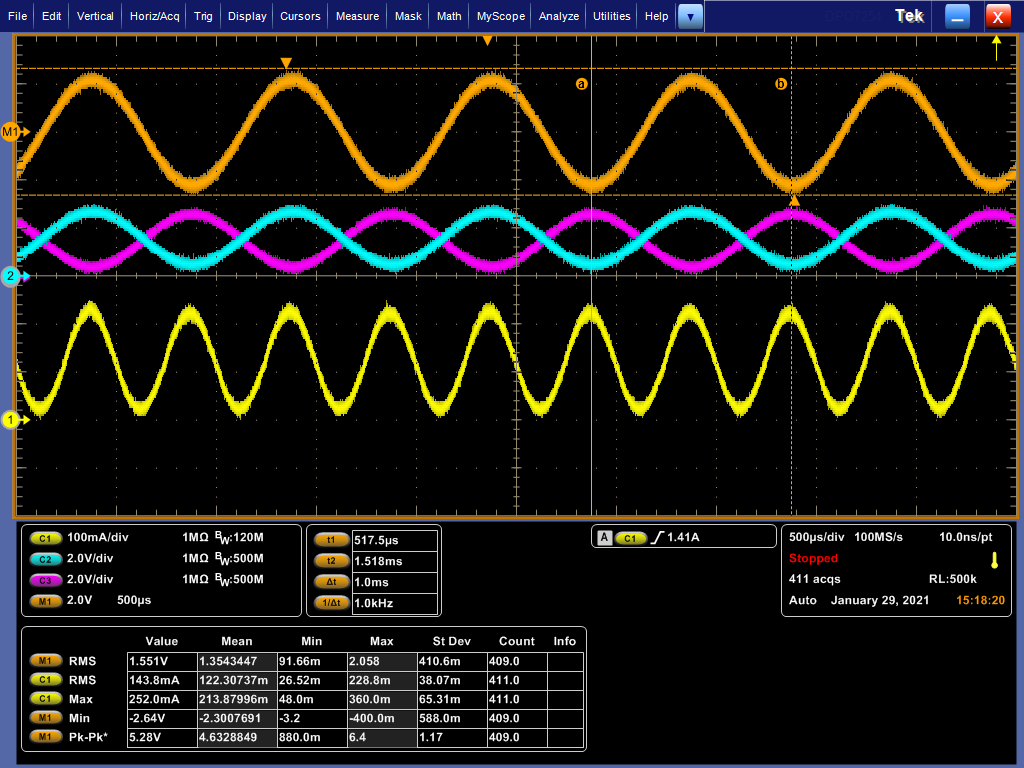Other Parts Discussed in Thread: TLV320AIC3120
Hello team,
My customer has a question about TLV320AIC3120EVM audio test.
By using the tool in the link (www.ti.com/.../slaa233.pdf), my customer could play the audio file and change the volume by setting the following and changing the volume with Dvol.
・ Class-D Speaker Driver: 12dB
・ Analog Attenuation: -4dB
But when playing a 1kHz sound source file, instead of expected 1kHz sine wave, but a square wave like the graph in attached file appeared in the speaker output (A waveform like noise of about 400kHz is observed with a raised range)
Are there any possible factors?
The waveform is probed at the + terminal ⇔-terminal of the speaker.
The codec is planned to be used in conditions below, but are there any change in the register settings to solve the above problem?
(However, the sound source file is output correctly, so it would be helpful if you could give us some advice on possible factors other than settings of registers.)
・ The microphone is unused. Therefore, ADC is not used.
・ Does not use headphone output.
・ Sampling frequency: 16KHz or 8KHz
・ Quantization bit number: 16 bits fixed
・ Audio I / F: I2S interface (controlled by CPU)
・ BCLK input: Approximately 512 KHz (clock output from the CPU). Use the BCLK clock as the reference clock for the PLL
・ MCLK is not used
If there are additional information needed, please contact me.
I'm looking forward for hearing from you.
Best Regards,
Ryotaro Fukui



